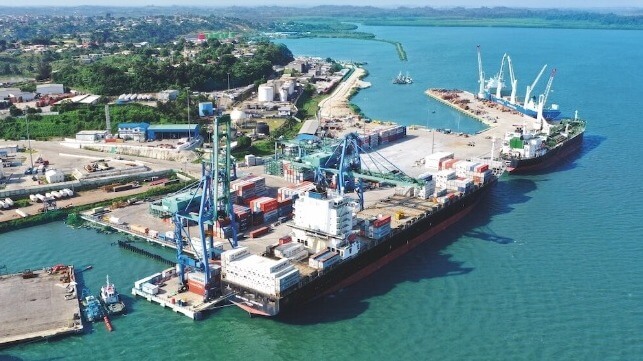Natural Resources Drive Africa's Trade, and Ports Will Play a Key Role

If you want to understand a country’s economy, as the adage goes, just look at the ports. And a close look of Africa’s ports tells us that natural resources will remain the driving force of trade across many parts of the continent for years to come. Despite a global Energy Transition that favors renewables over hydrocarbons and a push for local manufacturing, we are witnessing a trend of new ports infrastructure influenced by a huge appetite to export natural resources that will transform African economies.
There is a general consensus that Africa is the region most endowed with natural resources. Its arable land accounts for almost a quarter of the world's arable land, giving the continent unrivalled agricultural potential. This abundant land also has the particularity of containing natural resources that are strategic for world industry and for the continent's economic development: 85% of the world's platinum, 60% of manganese, 50% of cobalt, etc.
For the past two decades, the region has experienced sustained growth in the exploitation of its natural resources, driven by the increased interest of foreign investors and the willingness of African governments to identify new sources of funding for their development policies. The significant increase in commodity prices, combined with the exponential demand from emerging powers such as China, therefore provide an encouraging context for the emergence of a sustainable African mining industry. New ports infrastructure being built across West Africa, from Gabon to Ghana to Cote d’Ivoire, are accommodating this demand.
However, the sector is still facing numerous challenges to meet expectations. The intensification of mining has led to a redefinition of geographical spaces on the continent. The mining sector requires both the construction of supporting infrastructure for the extraction of resources and their transport to the areas where they will be processed. In areas that were previously almost exclusively dominated by traditional crop agriculture, the development of mining sites is leading to significant structural changes in the local economy. While mining is a capital-intensive sector, it is the economic activities that develop around the mines that ultimately provide the most employment. However, as the literature on the economic impact of natural resources in developing countries shows, the transformation of natural resources into economic prosperity is not a guarantee (especially in the absence of strong governing institutions).
Indeed, the structure of minerals, metals and hydrocarbons exports has changed significantly over the last two decades, both in absolute terms and in terms of trading partners. For many hydrocarbon poor countries, the growing interest in exploiting their minerals and metals provides a crucial link to global markets and value chains. However, without infrastructure that facilitates the movement of goods and people (land transport, shipping, storage, etc.) that is both well-maintained and technologically equipped, African economies struggle to exploit the potential of their vast resources. Faced with this situation and the huge need for investment and technical expertise that these projects represent, governments are increasingly resorting to public-private partnerships.
In Gabon, for example, the government is clearly demonstrating its desire to finance this new phase of its development by becoming a key player in the mining sector. Indeed, faced with the decline of its oil reserves, which represented an average of 45% of the country over the last five years, the country has endeavored to set up an attractive framework to attract international economic operators in the mining sector. The country has 885 kilometers of coastline, making it one of the largest maritime windows on the African Atlantic coast. As the historical port infrastructure did not have the capacity to support the country's economic transformation, the Gabonese government turned to foreign partners to establish a link between the country's mineral trade activity and international demand. The Owendo Mineral Port, born out of a public-private partnership between Arise Ports & Logistics, the French investment fund Meridiem and the Gabonese government in 2017, is a direct result of the transformation of the Gabonese economy.
Similarly, the Ivorian government has been able to take advantage of its maritime assets to attract new economic flows. For example, the Terminal Industriel Polyvalent de San Pedro, the result of a collaboration between Arise Ports & Logistics and the Ivorian authorities, now exports 95% of nickel. This new economic asset, which is part of the overall project for the San Pedro industrial zone, bears witness to the ongoing transformation of African port areas. With two deep-water docks (13 and 15 meters respectively), the terminal is capable of handling up to 160,000 tonnes of ore. These quantities were unimaginable a few years ago.
However, it is clear that the operational success of a port depends on many conditions, and the failures of some new African ports bear witness to this. The operational efficiency of a port depends on its ability to develop efficient logistical tools and to integrate the port system into a much wider multimodal transport network. Finally, it can be said that a port draws its strength from the quality of its partners. By developing tailor-made solutions adapted to the industrial ambitions of the regions in which they are located, and by working together with the public authorities to ensure that the site is properly connected to the country's (or even the sub-region's) transport networks, port operators give the industries of African countries a definite comparative advantage.
Ebrima Sawaneh is CFO of Arise Ports & Logistics.
The opinions expressed herein are the author's and not necessarily those of The Maritime Executive.
